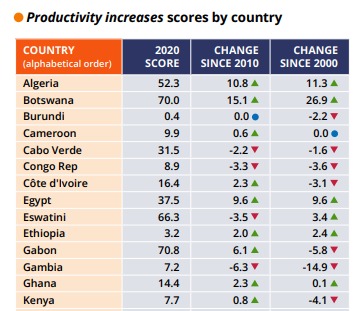Ghana’s productivity score inch up to 14.4; below African average of 27.2
The report notes that productivity increases remain vital for Africa’s post-pandemic recovery and long-term prosperity. It further states that, high and growing labor productivity is the basis for high and growing incomes, which are in turn a source for transformative investments and consumption. Yet despite recent improvements, labor productivity remains low in many African countries
Ghana’s productivity score as of 2020 inched up to 14.4.
This is according to the African Transformation Index (ATI) 2023 report, released by the African Center for Economic Transformation (ACET).
Per data provided in the ATI 2023 report, Ghana’s productivity score increased by 0.1 in 2000 and then further by 2.3 in 2010.
Despite the growth in Ghana’s productivity score, the country’s productivity score is still way below the African average productivity score of 27.2.
Per the ATI 2023 report, productivity increases measures the value added per unit of labor in agriculture, manufacturing and construction, and services.
It further states that, high and growing labor productivity is the basis for high and growing incomes, which are in turn a source for transformative investments and consumption. Yet despite recent improvements, labor productivity remains low in many African countries.
According to the report, the pathways for higher productivity increases include making gains through land reforms and labor-intensive models.
It also notes that, many early transformers and some African economies have enabled large-scale, more profitable farming by improving land governance and administration.
The 2023 ATI report encapsulates data spanning from 2000 to 2020, deploying a three-year moving average for scores. All scores are calibrated on a scale ranging from 0 to 100, where a score of 0 symbolizes a lack of transformation, and a nation attaining a score of 100 is considered highly transformed.
These scores facilitate not only the assessment of individual countries’ transformation journeys over time but also cross-country comparisons to inform informed decision-making.


